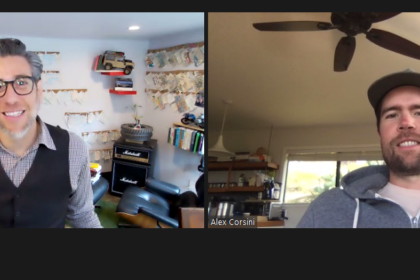
Behind every fermented food or beverage is intriguing science that creates a pleasantly tangy taste. Customers want to know all about that chemical process, right?
No. Stop geeking out and appeal to the foodie instead.
“This is about the joy of eating, and so when you over-science me and you over-gut me, I forget the joy of eating. Remind yourself that your most important message is how pleasant, how tasty, how engaging, that’s the pleasure of eating, and then you can tell me how you make that pleasure,” says Sasha Strauss, managing director at Innovation Protocol (a marketing consulting & design agency). Strauss shared his brand strategy tips in the TFA webinar Building a Fermented Brand. He stressed fermented brands need to avoid getting stuck in the “scientific nuance of how you make your products. I’m not saying delete the science, just don’t make it the marquee.”
Alex Corsini, founder of frozen pizza company Alex’s Awesome Sourdough (and TFA Advisory Board member) agrees. Corsini, who moderated the webinar, says he began his brand with a heavy emphasis on the science of fermenting sourdough.
“Our customer didn’t really respond to that. And that’s something I see in fermentation all too often, is people aren’t selling the actual benefit. They want to understand the benefit, so that’s what you lead with,” Corsini advises.
If you’re selling kombucha, for example, share that it’s a feel-good product that will make you feel better than a soda, Corsini says. Don’t make your selling pitch the SCOBY’s technical specifications.
Teach, Don’t Sell
“I don’t understand fermentation. I don’t understand the health benefits. I don’t understand its cultural origins. I don’t understand what section to buy it in. I don’t understand what to eat it with or who to serve it too. Your first duty as a brand is to help me make sense of this, help me understand it,” Strauss says. “It’s not your job to be the sexiest, raciest, the most innovative, it’s your job to help me understand. And where understanding sits in the consumer’s mind is where buying behaviors originate. So the first and most important duty of your brand is to simply help me not feel alone, help me not feel confused, help me not feel overwhelmed.”
By educating the consumer, by inspiring them to learn about fermentation, “they will be indelibly connected to you,” Strauss continues. “They will prefer you. They won’t wonder if your price is a penny cheaper, they’ll prefer you because you’re who they learned from. We buy who we learn from.”
There’s not enough room on a label to detail all the health benefits or the scientific details of a product. But this information can go on a brand’s website, social media page or table-top display at a trade show or farmer’s market.
“I hope that your audience doesn’t hear from you just once,” Strauss says. They should find a video of your product on Instagram, find recipes on your website and see an ad in the local paper. Brands need to create multiple opportunities to engage, “don’t try to cram all of your value in a single channel.”
A New Economy
The COVID-19 pandemic has permanently changed the economy. Consumer lifestyles have changed, too, and these new behaviors create opportunities, especially for fermented products that are healthy and flavorful.
“Historically, if you were trying to build a consumer packaged goods brand, it was really about your resume, your long list of accomplishments , your heritage in farming, your understanding of the chemistry and that was what marked the person, the business, the brand,” Strauss says. “But actually now, it’s really about how you resonate, how I connect with you, how you inspire me, and that doesn’t require a long history, that requires a contemporary participation.”
“In a world where the audience is starting and ending their search digitally, each of the things that you share, post, write about, blog about, video dialogue about, those things are little breadcrumbs that will never go away,” Sasha says. “They’re little trails that lead to your brand, lead to your resources, lead to your understanding and this is powerful.”
Consumers rejected traditional brand loyalties this past year. They’re increasingly open to new brands, curious about new cultural flavors and want healthy food. Critically, Strauss points out, they want to purchase from socially responsible brands. “In a post-covid era, we want a brant to also do good,” he says.
Producers must make conscious choices about the farmers they use — how are they improving soil health? What is the environmental impact of their distribution line?
“Understand you have to make an impact, somehow do good for the world while building business,” Strauss says.
